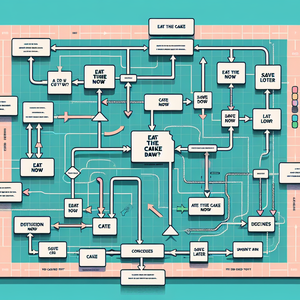The Evolution of Outlook: From Email Client to Productivity Hub

When Microsoft Outlook first entered the market, its primary purpose was to manage emails. Offering users a straightforward interface to send, receive, and organize email messages, the initial version of Outlook was a significant improvement over its predecessors. However, as communication needs evolved, so did Outlook. The introduction of features like calendar integration, contact management, and task lists began to lay the groundwork for its transformation into a more robust productivity tool. Outlook quickly became an essential application for professionals, providing the means to manage correspondence efficiently.
Integration of Calendars and Tasks
One of the significant milestones in Outlook’s evolution was the integration of calendars and task management features. As professionals recognized the importance of time management, Outlook adapted accordingly. Users could now schedule meetings directly from their email interface, send calendar invites, and set reminders for important tasks. This integration not only simplified scheduling but also ensured users could manage their time effectively without toggling between multiple applications.
Collaboration Features: From Emails to Teams
As remote work and digital collaboration gained prominence, Microsoft recognized the need to enhance Outlook's capabilities further. The integration with Microsoft Teams marked a pivotal shift in how users communicate and collaborate. Outlook users can now initiate Teams meetings directly from their calendar, chat with colleagues, and share files seamlessly. This integration fosters a collaborative environment where teams can work together in real-time, regardless of their physical locations.
Advanced Features for Enhanced Productivity
Outlook has also embraced advanced features that cater to the needs of power users. The addition of functionalities like focused inbox, email snoozing, and advanced search options has significantly improved the user experience. The focused inbox feature prioritizes important emails, reducing clutter and helping users stay organized. Conversely, email snoozing allows users to temporarily remove emails from their inbox, ensuring they can concentrate on pressing tasks without distractions.
The Role of Add-Ins and Third-Party Integrations
Another crucial aspect of Outlook’s evolution is the introduction of add-ins and third-party integrations. Users can now customize their Outlook experience by adding functionalities that cater to their specific needs. From project management tools like Trello and Asana to CRM systems like Salesforce, these integrations allow users to centralize their workflow and maximize efficiency.
The evolution of Microsoft Outlook from a basic email client to a comprehensive productivity hub is a testament to its adaptability in a rapidly changing digital landscape. By continuously integrating new features and functionalities, Outlook has transformed into a vital tool that caters to the diverse needs of modern professionals. As we look to the future, it will be exciting to see how Outlook continues to innovate and further enhance the way we communicate and collaborate in the workplace. Whether you're a seasoned professional or just starting, understanding and leveraging the full potential of Outlook can significantly improve your productivity and overall work experience. In a world where efficiency and collaboration are paramount, Microsoft Outlook remains at the forefront, shaping the future of digital communication and productivity.
Productivity Software Specialist
Tech firms like Microsoft, Google, and productivity-focused startups.
Core Responsibilities
Provide training and support for users on productivity tools, including Microsoft Outlook and related software.
Develop and implement best practices for using software features effectively to enhance workplace efficiency.
Required Skills
Strong understanding of productivity software, particularly Microsoft Outlook, Excel, and Teams.
Excellent communication skills to convey complex information in an understandable manner.
Collaboration Tools Consultant
Consulting firms, corporate training organizations, and large enterprises undergoing digital transformation.
Core Responsibilities
Assess organizational needs and recommend collaboration tools that integrate with Outlook and other platforms.
Facilitate workshops and training sessions to help teams maximize their use of collaboration tools.
Required Skills
Experience with Microsoft Teams, SharePoint, and third-party integrations like Trello or Asana.
Strong analytical skills to evaluate tool effectiveness and suggest improvements.
Email Marketing Specialist
Marketing agencies, e-commerce companies, and nonprofits.
Core Responsibilities
Design and execute email marketing campaigns using Outlook and other email platforms.
Analyze campaign performance metrics and adjust strategies to improve open and response rates.
Required Skills
Proficiency in email marketing software and analytics tools.
Knowledge of HTML/CSS for email design, along with strong copywriting skills.
IT Support Specialist for Office Applications
IT service providers, corporate IT departments, and educational institutions.
Core Responsibilities
Provide technical support for Microsoft Office applications, including troubleshooting issues related to Outlook and Office 365.
Assist with software installations and updates, ensuring all tools are functioning optimally.
Required Skills
Strong technical knowledge of Microsoft products and troubleshooting techniques.
Customer service skills to assist users in effectively using the software.
Remote Work Coordinator
Companies with remote work models, HR consulting firms, and startups focused on remote operations.
Core Responsibilities
Develop guidelines and best practices for remote teams using tools like Outlook and Microsoft Teams to ensure effective communication.
Monitor team productivity and engagement, addressing any challenges that arise in a remote setting.
Required Skills
Experience with remote team management and familiarity with digital collaboration platforms.
Strong organizational skills and the ability to facilitate virtual meetings and training.


